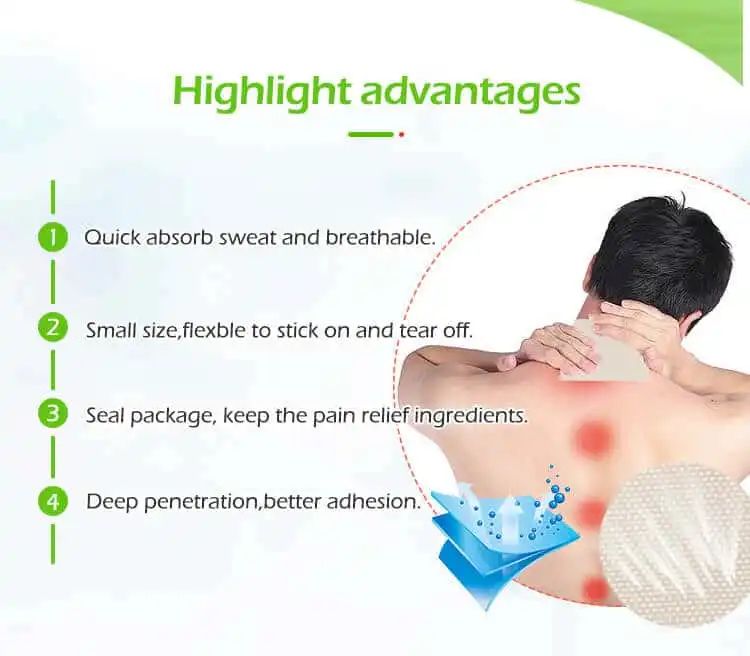How Do I Know if My Custom Effective Pain Relief Patches Need Clinical Trials?
When developing Custom Effective Pain Relief Patches for commercial use, understanding regulatory obligations is essential. One of the most critical questions brand owners, distributors, and formulators face is whether clinical trials are required before going to market. This guide explores the conditions under which clinical trials are necessary and how to determine the correct pathway based on global standards.

Understanding the Nature of Your Custom Effective Pain Relief Patches
The need for clinical trials largely depends on the classification of your product. In most regions, Effective Pain Relief Patches can fall into one of two regulatory categories:
Drugs (Pharmaceutical Products)
Medical Devices
Each classification comes with its own regulatory demands. Here's how to determine where your product fits.
1. Determine Classification: Drug or Device?
Drug Classification: If your Custom Effective Pain Relief Patches deliver active pharmaceutical ingredients (APIs) like lidocaine, menthol, or NSAIDs into the body, your product will likely be regulated as a drug.
Device Classification: If your patch provides relief through mechanical action, heat, or simple barrier protection and does not rely on a pharmacologically active substance, it may be classified as a medical device.
An Effective Pain Relief Patches Manufacturer or regulatory consultant can help confirm your product’s classification in your target market.
2. Regulatory Requirements by Region
United States (FDA)
Drug Products: New Drug Applications (NDAs) typically require clinical trial data unless your product uses a monographed or already-approved ingredient/formula.
Medical Devices: Most Class I and Class II devices may not require clinical trials, but some may need performance data.
European Union (EMA / MDR)
Drugs: Subject to strict regulatory control under EMA. Clinical data is almost always required unless the product is a generic.
Devices: Regulated under EU MDR. Class II and III devices often require clinical evaluations and may need trials.
Asia-Pacific (e.g., China, Japan, South Korea)
Requirements vary widely. Products with new ingredients or formulations often require local trials or bridging studies.
Working with a compliant Effective Pain Relief Patches OEM experienced in multiple markets can streamline approvals.
3. Key Factors That Trigger Clinical Trial Requirements
Novel Ingredients or Formulations: New active ingredients or unique delivery mechanisms almost always require clinical trials.
Claims on Packaging and Marketing: If you make strong or therapeutic claims (e.g., “eliminates chronic pain”), you may need efficacy data to back them.
Intended Use and Duration: Long-term or continuous-use patches may require more rigorous safety and performance testing.
Target Population: Products intended for vulnerable populations (elderly, pregnant women, children) typically face more scrutiny.
A reputable Effective Pain Relief Patches Supplier can help guide these decisions during the design and formulation phase.
4. Steps to Determine Clinical Trial Necessity
Conduct a Regulatory Gap Analysis
Compare your product’s features with existing products.
Analyze what trials were required for similar products.
Consult with Regulatory Authorities or Experts
Agencies like the FDA, EMA, and local ministries often offer consultation services.
Hire a regulatory expert or partner with an experienced Private Label Effective Pain Relief Patches partner.
Assess Your Marketing Claims
Reduce high-risk claims that may shift classification from device to drug.
Ensure all statements can be backed by scientific or clinical evidence.
Work with a Qualified OEM Partner
Collaborating with an Effective Pain Relief Patches OEM that has successfully launched similar products can reduce trial needs.
5. Cost and Timeline Considerations
Clinical trials are expensive. Phase I-III trials can cost millions depending on the market and study length.
Timelines vary. From 6 months for short evaluations to 3–5 years for full pharmaceutical trials.
Early planning with a well-established Effective Pain Relief Patches Manufacturer ensures a smoother path to market.
6. Alternatives to Full Clinical Trials
Literature Reviews: Existing published data on similar ingredients may suffice.
Bridging Studies: If you’ve modified an existing product slightly, comparative data might be accepted.
Pilot Studies: Short-term trials with a limited population may be adequate for Class II medical devices.
Conclusion: Know Before You Launch
Clinical trials can be a major hurdle—or a valuable asset. The need for trials ultimately depends on your product’s formulation, claims, classification, and target markets. By partnering with the right Effective Pain Relief Patches Supplier, you can develop compliant, effective, and market-ready products without unnecessary delays.
Choosing an experienced Custom Effective Pain Relief Patches manufacturer or OEM ensures the right regulatory path is followed—helping you avoid costly missteps.
Related Questions and Short Answers
Q1: What makes a pain relief patch a drug instead of a device?
A1: If it contains active pharmaceutical ingredients, it’s typically considered a drug.
Q2: Can I use published clinical data instead of conducting new trials?
A2: In some cases, yes. A literature review or bridging study may be accepted.
Q3: Do Private Label Effective Pain Relief Patches need their own clinical data?
A3: If the formulation is unchanged and based on an approved product, new data may not be necessary.
Q4: Who decides if clinical trials are required?
A4: Regulatory authorities in each target market make this determination.
Q5: Can an Effective Pain Relief Patches OEM help avoid clinical trials?
A5: Yes, an experienced OEM can guide the formulation and claim strategy to avoid unnecessary trials.






